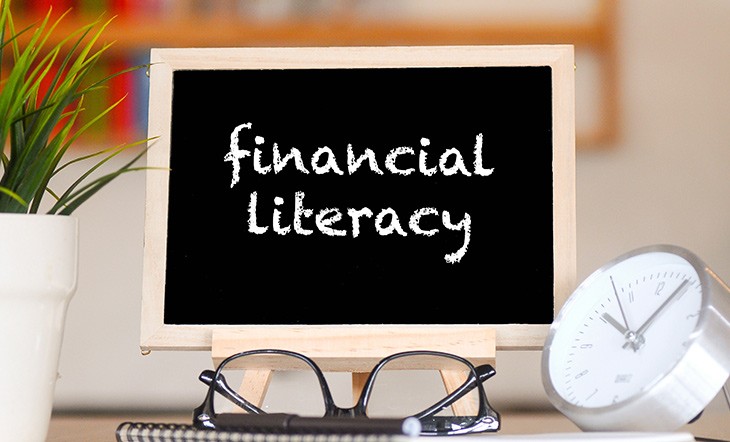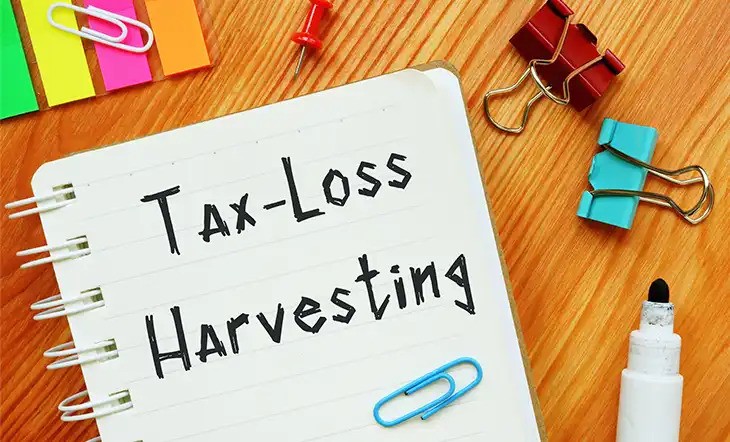Retirement Planning Tips for Single Mothers
.jpg)
In today's ever-evolving economic landscape, retirement planning has transformed from a traditional concept into a dynamic and inclusive practice. While much information surrounding this crucial phase of life centers around families and couples, it is important to recognize and celebrate the growing demographic of single mothers who are embracing financial planning with determination and resilience. Often balancing careers and child-rearing responsibilities, they are often required to make smart financial decisions. They are either well-versed with or striving to ace budgeting and savings practices, ensuring that every hard-earned dollar stretches to meet their financial needs - for themselves and their families.
According to a recent study, confidence in managing day-to-day budgeting is a forte for most women, with 82% feeling assured of their skills. However, this confidence may waver when it comes to longer-term financial planning for the self, particularly for retirement or selecting suitable investments for it. If you find yourself in this situation, consider consulting with a professional financial advisor who can guide you on how to plan for retirement keeping the needs of single mothers in mind.
From optimizing savings and investments to exploring government programs and seeking professional guidance, this article offers a comprehensive view of potential pathways toward a secure retirement for single moms.
Here are 7 tips single mothers can consider while planning for their retirement:
1. Discuss the importance of financial management with your kids
Single mothers and their children can make a stellar team and achieve their goals together. When you are looking at securing a stable financial future as a single parent, bring the children on your team. Making them a part of your financial planning process can make the journey towards retirement a smooth one.
Also, when you discuss retirement plans with your kids, it can help to set a precedent of responsible financial behavior and impart the significance of early financial planning.
You may discuss the importance of financial contributions with your kids. Encouraging them to set aside some of their allowances or any monetary gifts they may receive for savings may help to instill the savings habit early on in life. Teach them about the power of compounding and how even small contributions can grow into substantial savings over time. By involving them in saving for their future, you stand to empower them to become financially responsible individuals.
Being transparent about financial matters with your kids can lead to a better understanding of financial realities and constraints. Discussing your budget, expenses, and the importance of managing money wisely, may help to work together towards the goal while keeping the disappointments in check. It creates a supportive environment where kids can feel comfortable discussing their financial concerns and aspirations. It also helps them develop a sense of empathy and responsibility toward financial decisions.
2. Leverage Uniform Transfers to Minors Account (UTMA)
Leveraging a Uniform Transfers to Minors Account (UTMA) has emerged as a strategic approach for single mothers, offering single mothers a dual opportunity to save for retirement while investing in their children's future. UTMA accounts provide a pathway for transferring assets to underage beneficiaries. Established through the Uniform Transfers to Minors Act (UTMA) in 1956 and refined in 1966, this framework streamlines asset transfers from parents or individuals to minors, circumventing the need for intricate trusts.
Within UTMA accounts, a spectrum of assets, including cash, stocks, bonds, and other investments, can be securely held. The tax advantages of UTMA accounts are notable: assets gifted to UTMA accounts constitute completed gifts and are exempt from the donor's estate. Additionally, these gifts may align with the annual gift tax exclusion, allowing tax-free contributions of up to $17,000 per year per beneficiary in 2023.
Single mothers may harness this exclusion to funnel funds into their children's UTMA accounts, fostering the gradual accumulation of wealth. Notably, this strategy facilitates pivotal objectives like funding higher education or marriage for children, while concurrently relieving potential financial burdens in proximity to retirement. They can use diversified options such as mutual funds, stocks, and ETFs contributing to the construction of a resilient portfolio that augments potential returns over time.
UTMA accounts operate as custodial accounts; as the child attains the age of majority (typically 18 or 21, contingent on the state), control over the assets transitions to them. Consequently, the child assumes the autonomy to determine the utilization of these funds, potentially diverging from the single mother's original intentions. Given this aspect, effective retirement planning for single mothers extends beyond their financial situation. It may help to engage in meaningful conversation with children about the judicious and responsible management of the assets they will eventually oversee.
3. Maximize the value of your retirement plans
To secure a comfortable retirement, single mothers can maximize the value of their retirement plans. Leveraging the potential of a 401(k), an employer-sponsored retirement plan, can yield multiple benefits. Contributions are tax-deductible which reduces taxable income and results in lower tax liabilities. Furthermore, many employers match contributions, providing an invaluable boost to retirement savings. To optimize this, single mothers may consider contributing enough to secure a full employer match, reaping immediate returns on investment. For 2023, you can contribute a sum of $22,500 each year with an additional $7,500 in catch-up contribution, if you are 50 and up.
Choosing Roth IRAs is another valuable strategy. Roth IRAs are funded with after-tax dollars and offer tax-free withdrawals in retirement. They can serve as both a secure retirement vehicle and a means to save for children's education or unforeseen expenses. For 2023, you can make an annual contribution of $6,500 with an additional $1,000 in catch-up contribution, if you are 50 years old or above.
By automating contributions to 401(k)s and Roth IRAs, single mothers can streamline savings, ensuring a consistent allocation of funds and resisting impulsive spending temptations.
SPONSORED WISERADVISOR
4. Establish family bank limits
Establishing family bank limits is one effective strategy for single mothers to secure their financial future during retirement. It entails setting clear boundaries on financial support and assistance to family members, including adult children, to ensure that your retirement savings remain intact and sufficient for your retirement years.
Establishing family bank limits ensures you don't deplete your retirement savings or compromise your financial security while assisting your family members. To implement family bank limits, consider an open and honest conversation with your family members about your financial situation and retirement goals. Be transparent about what you can contribute without jeopardizing your retirement plans.
5. Protect your children with an estate plan
While retirement planning for single mothers often emphasizes personal financial security, ensuring the well-being and protection of children remains among the top priorities for most mothers. As a single mother, establishing a well-thought-out estate plan is one of the most crucial steps to secure your children's future.
An estate plan encompasses various legal documents and strategies that can safeguard your assets and provide for your children's long-term welfare.
Below is a list of steps you need to take to create an estate plan:
- Appoint a guardian: Designate a trusted individual to care for your children in the event of an untimely passing, ensuring their upbringing aligns with your values and understanding of their needs.
- Create a will: Craft a will to guarantee your children inherit your estate according to your intentions, specifying asset allocations and including instructions for their financial management until certain ages or milestones.
- Establish trusts: Set up trusts to assign a responsible trustee who manages assets left for your children until they are mature, protecting against mismanagement, creditors, and potential conflicts.
- Designate beneficiaries: Review and update beneficiary designations on various accounts, such as retirement plans and investment portfolios, to ensure seamless asset transfer and prevent conflicts.
- Establish powers of attorney and healthcare directives: Incorporate documents granting trusted individuals powers of attorney and healthcare directives, enabling them to make essential financial and healthcare decisions if you become incapacitated.
- Regularly review and update: Periodically revisit and adjust your estate plan to accommodate changing life circumstances and evolving needs, ensuring its continued alignment with your children's well-being and your goals.
- Seek professional legal advice: Consult an estate planning attorney to navigate legal complexities, ensuring your estate plan is tailored to your specific situation and objectives, offering a comprehensive and effective strategy.
6. Save for college expenses with a 529 plan
One effective tool that single mothers can use for saving specifically for their child's college education is a 529 plan.
A 529 plan is a tax-advantaged investment account to help you save for future education expenses. It is named after Section 529 of the Internal Revenue Code, which governs its tax treatment. It comes in two primary forms: prepaid tuition and education savings plans. With this plan, you can invest funds into mutual funds or other investment options.
The plan's earnings are tax-deferred, and withdrawals for qualified education expenses, such as tuition, books, and room and board, are typically tax-free. A 529 plan allows you to build a college fund for your child without incurring immediate tax liabilities on the investment gains.
An early start brings long-term advantages through compounding growth potential, as regular contributions, no matter how small, can accumulate significantly over time, easing the financial load when your child enters college. The 529 plan's appeal lies in its flexibility and convenience; a modest initial contribution allows accessibility for single mothers across varying financial circumstances. Most states offer 529 plans, affording a range of investment options, and the plan's utility isn't confined to your state; it extends to eligible institutions nationwide. With contributions using after-tax funds, the plan's investments grow tax-free, and withdrawals for qualified educational expenses remain free from federal income taxes. Further savings enticements are offered by certain states through tax deductions or credits for contributions, enhancing the attractiveness of the 529 plan for single mothers juggling college expenses and retirement planning.
7. Sign up for dependent care flexible spending accounts (FSAs)
One of the critical retirement tips for single moms is to sign up for dependent care flexible spending accounts (FSAs). These special accounts allow you to use pre-tax dollars to pay for eligible care expenses for your child, spouse, parent, or other dependent who lives with you and is incapable of self-care.
Using money before taxes are taken out can lower the amount of money that gets taxed, saving you money on taxes. For example, if you're in the 24% tax bracket and you spend $1,000 on caring for your dependents through a special account (FSA), you could save $240 on federal taxes. This FSA is helpful for childcare under 12, preschool costs, summer camps, and adult daycare for eligible individuals. It is a smart way to save on caring for kids or adults while also saving for retirement. Just be careful to plan well so you don't lose unused money at the end of the year. Keep records of what you spend to claim reimbursement. This has proven to be a useful tool for single moms looking for a robust financial plan that lasts.
To conclude
Retirement planning for single mothers may seem daunting given the single income in the household and the responsibility for their children’s future. However, it can be simplified with a systematic approach. By taking proactive steps early on, clearly understanding your financial needs, formulating a well-structured budget, seeking expert advice, and maximizing the potential of retirement accounts and benefits, you can lay a solid foundation for your future.
Moreover, it is crucial to regularly review and adjust your retirement plan to align with changing circumstances. By incorporating the retirement tips mentioned above for single mothers and making informed and prudent decisions, you can achieve financial security in retirement and ensure a brighter future for yourself and your children.
Use the free advisor match tool to match with experienced financial advisors who can guide you effectively on how to create a customized retirement plan for single mothers. Answer a few questions based on your financial needs, and the match tool will help connect you with 1-3 financial advisors that may be suited to help you.








.jpg)












.jpg)






.jpg)


.jpg)


.jpg)














.jpg)




.jpg)






.jpg)

.jpg)







.jpg)

.jpg)






.jpg)




.jpg)
.jpg)

.jpg)



.jpg)





.jpg)
.png)
.jpg)

.jpg)



.jpg)





.jpg)

.jpg)


.jpg)
.jpg)
.jpg)
.jpg)

.jpg)
.jpg)



.jpg)




.jpg)
.jpg)


.jpg)
.jpg)
.jpg)
.jpg)
.jpg)

.jpg)




.jpg)
.jpg)

.jpg)

.jpg)
.jpg)
.jpg)

.jpg)

.jpg)













.jpg)



.jpg)





.jpg)











.jpg)



